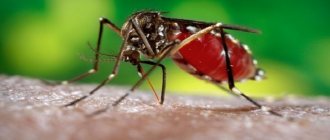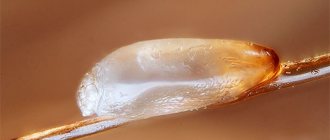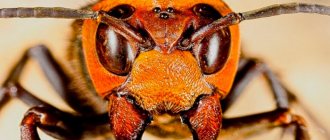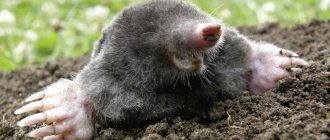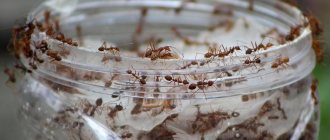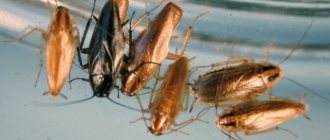In the spring, unwanted neighbors often appear on a summer cottage or in a private house - wasps, bees and hornets, which are dangerous to humans, wooden buildings and garden trees. To avoid stings and damage to structures, it is important to know how to get rid of hornets and prevent them in the future. Traditional methods, pesticides and mechanical destruction of nests can help solve the problem.
Hornets are large insects that cause fear with their appearance, and their bites are dangerous to life and health. In order to protect yourself and your site, it is important to know how to deal with pests and destroy their nests
The article contains effective methods for exterminating pests, and also presents effective preventive measures that will help prevent the occurrence of such a problem.
Features and danger of hornets
The hornet is a large insect belonging to the winged subclass and arthropod phylum. Adults reach 3-5 cm depending on the subspecies. Insects have a large head, on which there are three eyes and antennae, the number of which differs in males and females. The rounded abdomen is covered with alternating yellow and black stripes.
In females, there is a sting at the tip of the belly, which simultaneously serves as an ovipositor. In its normal state it is retracted, and insects use it only for self-defense. At the same time, pests can use it repeatedly, making multiple bites.
Hornets are similar in appearance to wasps - they are black and yellow in color and have transparent wings. They are distinguished by their larger size, the presence of a “waist” at the junction of the abdomen with the chest, and increased aggressiveness towards humans and bees.
The pest's bite is very dangerous, because along with the sting, poison penetrates into human flesh, causing an acute allergic reaction and intoxication of the body. Swelling and pain occur at the site of the lesion. Repeated hornet stings cause anaphylactic shock, which can be fatal.
To live and breed offspring, insects create nests, which are located mainly in attics, under roofs, in the walls of houses and other hard-to-reach places. They often settle in the hollows of trees located near the apiary. This makes it easier for them to find food as they steal honey from the bees, destroying them. To preserve the apiary, it is important to promptly destroy pests or expel them from the territory.
In winter, all individuals die, leaving only the fertilized uterus, which, when warming, lays eggs and nurses the offspring. It is better to carry out the operation to destroy the nest in winter or early spring - in such conditions the insect population is not so large.
To build nests, pests choose secluded corners where they have access to protein foods or sweets. Favorite places are tree hollows, attics, walls, and the area under the roof. They often settle near apiaries, which poses a threat to beekeepers
Precautions when killing insects
Hornets are dangerous with their bites, so when planning a special operation to destroy them, take the appropriate safety measures:
- wear a special protective suit or thick clothing that insects cannot pierce with their stings;
- take care to protect your face by wearing a special hat with a mesh;
- act carefully - do not make noise, do not wave your arms or sticks, so as not to provoke the hornets into aggression;
- when working with poisons, use disposable containers to prepare the solution, which must be disposed of after use;
- use a respirator in case of spraying aerosols with toxic substances;
- When burning a nest, follow fire safety rules to avoid fire.
When going to fight hornets, wear a special protective suit for beekeepers or thick clothing to protect yourself as much as possible from insect bites
Neutralization and destruction of nests
To ensure you get rid of pests, destroy the nest. To find it, it is enough to follow the flight of insects, and then, depending on the location, choose the optimal method of destruction.
Sealing the nest
To destroy the hornets' home, use polyurethane foam. At night, when pests are less active, treat the hive with a sealing compound, thoroughly filling all cracks and holes. The lack of oxygen and the ability to fly out for food will lead to the extinction of all individuals.
To destroy the nest and its inhabitants, seal the evidence. This can be done with polyurethane foam or other sealing compound.
Pouring water
To flood the nest, prepare a bucket filled with water. For maximum effect, add an insecticide designed for wasps and hornets to the liquid. Place a bucket under the nest and gently lower it into the water. The liquid will fill the honeycombs and the insects will not be able to get out of their house, which will lead to their death.
Burning out with fire
Fire will help get rid of a pest nest located in an open area. Douse the home with a flammable mixture (gasoline) and set it on fire. During the operation, make sure that the flame does not spread to trees, dry grass or outbuildings, otherwise you will have to fight not only pests, but also the fire.
Smoke bomb
A smoke bomb (Mukhoyar, FAS, HELP, etc.) will help destroy the nest. The application procedure is as follows:
- Insulate the room and seal all cracks so that insects cannot escape.
- Make sure that there are no children, pets, or food near the treatment area.
- Activate the smoke bomb according to the instructions.
- Clean the room.
Smoke bombs will help control pests. Before use, carefully read the instructions and take the recommended safety measures
Traps and bait
Traps with bait will help get rid of single insects remaining after the destruction of the nest. You can make them yourself using available tools and materials. Spoiled fish, a mixture of honey and beer, and fermented fruit syrup are used as bait.
The simplest trap option is sticky tape, which is used to catch flies and cockroaches. You can do it yourself:
- Cut out small strips of thick cardboard.
- Apply a generous layer of honey or fruit syrup. This will serve as both bait and a trap for insects to stick to.
- Place bait in areas where hornets frequently appear.
- Replace traps periodically and burn old ones.
Homemade traps with bait located in places where insects are active will help you catch single pests.
You can make other traps with your own hands:
- put the bait in a glass jar and close it with a lid with a hole in the shape of a cross and the edges of the cut curved inward;
- Cut off the top of a plastic bottle (1/3) and insert it back with the neck down. Fill the bottom reservoir with bait and place the trap in a visible place;
- Pour the fermented fruit syrup into a large container (bucket) and leave it near the pest habitat.
Device of traps
A hornet trap will help rid your area of unwanted “neighbors.” Such structures can be installed in gardens or apiaries, even if there are no wasp nests there yet. Scout insects will fall into the traps. They will no longer share information about the new “grain place” with their relatives.
Sugar syrup, compotes or a honey solution are sometimes used as bait, but bees often fall into such traps. To prevent their death, it is better to prepare bait from fermented compote or jam. To attract hornets and wasps, you can use beer and mash. These insects readily flock to the smell of alcohol, and bees “disdain” it.
We must not forget about the “child love” of wasps. If there is meat in the trap, insects, which are constantly in search of food for the larvae, will definitely fall into it. There is also an effective drug for killing wasps - Otos. Saturated with fragrances and insecticides, it attracts predatory insects into the trap. Otos is not dangerous for bees: they are indifferent to the bait.
Trap with meat bait
How to remove hornets and wasps using a meat bait trap? The procedure is simple:
- A film container or similar smooth cylinder is glued to the bottom of the plastic bottle.
- Soapy water is poured into the container so that it does not reach about 4 cm from the top of the container. If the water level in the bottle is higher, the hornet will be able to get out of it. The soap solution must be made from laundry soap so that the liquid has no odor. An insect is more likely to drown in a soapy solution because its surface tension is weaker than that of clean water.
- Pieces of meat or fish are placed on the cylinder cover. Only fresh food should be used as bait: the wasp is not interested in rotten meat.
You need to drill several holes in the bottle. The smell of meat will spread throughout the area much faster. The wasp that flies to it will grab a larger piece. Overloaded, it will not be able to take off and will definitely fall into the water.
Traps with sweet bait
A “sweet” trap against hornets is made from plastic bottles with a capacity of 1.5-2 liters:
- cut off the cone from the container and unscrew the plug;
- a little bait is poured into the bottle;
- the inverted conical part is inserted into the cylinder.
The trap can be attached to the trunk with tape (in this case, the wind will not be able to overturn the lightweight container) or suspended from the branches using wire.
Insects, attracted by the smell of the bait, climb into the funnel. They will no longer be able to fly out of the trap: taking off or crawling along its walls, the hornets will hit the walls of the cone. To make the bait lethal to wasps, a little borax or boric acid is mixed into it.
It is better to use transparent containers to make traps. The insects inside them become disoriented, and the hornets outside are more willing to climb into the bottle if they see their relatives there.
You can make a slightly different design from plastic containers:
- a cone is cut from one of the bottles (0.33; 0.5; 1 or 1.5 l);
- in the body of the other, a cut is made with a cross;
- the cone without a lid is inserted into the cut with its narrow part.
Wasps will crawl into a kind of entrance. The lid from the neck of the trap is not removed. It is unscrewed only before filling the container with bait. Hornets trapped in a bottle will not be able to get out through the entrance: they will try to get out of the container only through the top. A larger container can be equipped with 2-3 tapholes. They, in addition to everything else, will help spread the smell of the bait faster. The entrances can be cut from dark plastic.
Another type of trap is a bottle closed with a cork with holes in the body drilled with a drill with a cross-section of no more than 8 mm. The hornet can climb into the container, but it will not be able to get out of it.
Traps are placed in close proximity to fruit crops.
Insecticides for killing hornets
To combat hornets, insecticides are used in the form of aerosols or powders. Before use, carefully read the instructions and recommended safety precautions, wear a respirator, gloves and a tight suit that will protect against bites. Baiting should be carried out at night, when most insects are in their homes. After the hornets die, the nest is removed and burned.
Insecticides will help get rid of insects in hard-to-reach places. When working with chemicals, observe safety precautions and strictly follow the instructions for use.
Insecticides can be applied in several ways, depending on the location of the hive and its volume:
- spray the insecticide spray onto the nest for a few seconds. If necessary, repeat the treatment several times;
- pour the prepared poisonous composition into the bag, put it on the socket and secure with tape;
- pour the solution into a nest located in the ground or hollow of a tree and seal all holes with a rag so that insects cannot escape.
The following medications will help get rid of hornets in your dacha under your roof:
| Drug name | How to use | Peculiarities |
| "Bros" | Spray the can onto the nest | After treatment, burn dead insects to avoid poisoning pets |
| "Otos" | Dissolve 10 g of powder in 100 ml of water and spray the nest | The poisonous substance does not act immediately, so angry insects can attack in a swarm. Follow safety precautions when using this method |
| "Moskital" | Spray an aerosol can onto the nest | The drug is effective and high cost |
| Wespex Quick | Spray the nest | An effective remedy in the fight against hornets, bees and wasps. Safe for people and pets |
| "Dichlorvos" | Spray the product in the form of an aerosol in the pest habitat | Preparations produced by different brands are suitable for killing hornets. |
| Dr. Klaus | Direct the aerosol stream at the nest for 10-20 seconds | Carry out processing with doors and windows closed. Re-bait if necessary. |
If you cannot cope with the hornets on your own or their home is located in an inaccessible area, contact a pest control service for help. Specialists will quickly and effectively exterminate insects and clean up the area.
The most effective means
In places where the use of caustic chemicals is not possible (for example, in the kitchen or attic), it is advisable to use special insecticides. Although the poison will not remove all individuals, it will help to significantly reduce their number. You can make a decoction of fly agaric, buy boric acid or Chlorophos.
The following well-known anti-hornet remedies are also used:
- Raptor;
- Tetrix;
- Dichlorfox;
- Aktara;
- Sail;
- Karbofos;
- Get.
The product is sprayed at a distance of 4-6 meters from the hive, so it is worth buying a product with a good range of action. It is recommended to direct it into the hole of the nest. Usually it is located at the bottom. The chemical must be used strictly according to the instructions. You should move away immediately after spraying. When you hear the sound of insects, it is better to cover your head and run for cover.
You can check whether the chemical has worked no earlier than after a day. If some of the hornets remain alive, the procedure is repeated. They do this even when the hive is large. After waiting until it is completely empty, you need to remove the hornets' nest by knocking it to the ground and covering it with sand.
Important! When using chemicals, be sure to cover all holes in the hive, except the entrance, so that angry individuals do not get out. Clay is used for this.
Among the latest developments, ultrasound against hornets is popular. It is used in closed spaces. Sound waves, harmless to humans and animals, will scare and drive away insects. In addition, insecticidal lamps are sold, as well as devices that emit electromagnetic waves.
Another effective way to get rid of hornets is to light fly or mosquito repellent strips cut into thin strips near the nest. They should be set on fire in a metal container. Hornets cannot tolerate insecticidal smoke.
Folk remedies for fighting insects
Folk remedies that are easy to use and safe for humans will help remove hornets. The insect extermination operation should be carried out in early spring, when the insect population is not so large.
Effective folk remedies and methods of combating hornets:
- Place a small piece of meat near the pest habitat. Insects will flock to the aroma of food, and they can be destroyed with an insecticide;
- chop 3 caps of fly agaric and boil them with 100 g of honey and 200 ml of water. Place the bait in half-liter jars and place it in the insect habitat. This composition has a poisonous effect on hornets;
- 3 tbsp. l. Dissolve boric acid in 50 ml of boiled water and boil for 10-15 minutes. Pour the solution into small containers and place around the nest. This will destroy the prey hornets, but will not lead to the complete extinction of the family.
Hang bunches of red capsicum near the nest - the bright aroma will scare away pests or, conversely, prevent them from leaving the hive, and they will die of hunger
Prevention
If you notice that these insects have appeared on the site, you should immediately find out where they began to build a nest.
The settlement should be destroyed in the bud before it grows. Destroying the nest at an early stage will help keep the hornets away from the area for a long time. Plain water with sugar, placed in buckets around the area, can be used as a preventative measure. In addition to water and sugar, you also need to add vinegar essence and a little soap or other detergent to the bucket. It is best to place the container where you have seen hornets, or where their nest was last year. Sugar will attract hornets with its taste, soap will prevent them from flying up, and vinegar essence will completely poison them. Read how to get rid of ants on your property at this link.
This is a simple but quite effective trap. It can be used not only for prevention, but also when the hornets have already built a nest in the area, but you cannot detect it.
It is recommended to repeat the procedure from time to time during the summer. If the area is large, then it is better to make several such trap containers, placing them in different places.
Careful sealing of all cracks in the house, including in the attic and veranda, can be an effective preventive measure. Since insects will be blocked from entering the room, they will not be able to settle there and build a nest.
Regularly inspect the nooks and crannies of your home to look for a new nest. This is especially important if you have already driven hornets out of the area once. The fact is that insects may well return to the place they once loved. To make a new one out of an old place, paint the wall where the nest was in a different color, nail a shelf on it or put a cabinet on it: in general, change the “terrain” in some way so that the hornets cannot help but know when they return and do not accept for “our own”.
You can scare away hornets by hanging an artificial nest on the wall of a place they have once chosen. Hornets will never settle next to another family of similar individuals. It will also be useful to learn how to get rid of wireworms in a potato plot.
Preventing the appearance of hornets on the site and in the house
After exterminating hornets in your home or area, take the recommended preventive measures to prevent the insects from appearing again:
- carefully treat the place where the nest was located with poisons or at least ordinary vinegar, place repellent herbs or an artificial nest there;
- place traps on the territory where single insects and queens will fall, which will prevent the construction of a nest in this territory;
- inspect the house and area for places suitable for nesting hornets, seal cracks and holes;
- Throw out garbage and food from pets' bowls in a timely manner - the lack of protein food will make the area less attractive to pests.
In the spring, check all potentially dangerous places on the site where pests can establish nests. Destroy hives in the initial stages of formation, before new insects hatch
The hornets that have settled in the neighborhood cause fear and pose a threat to people. To protect yourself and clear the area of pests, exterminate the insects and destroy the nest. You can do this yourself using mechanical methods, chemical or folk remedies, as well as through special services. After getting rid of the hornets, take preventive measures to avoid the problem from recurring.
Do I need to get rid of hornets?
Experienced gardeners know that hornets are beneficial. Just one family of these insects destroys up to 500 pests - bedbugs, caterpillars and butterflies. Hornets can attack a person if they perceive his behavior as a threat to their safety. If insects have settled in a garden plot, their nest can be left, but if they have chosen an attic or the roof of a house as a place of settlement, then they must be destroyed.
If there are hornets, how to get rid of them in the house? First you need to determine the location of the nest. Then, having assessed the threat, you need to choose the optimal method of exterminating insects. The most common method is to knock the nest down with a stick, put it in a bag and take it out of the house.
Hornet

